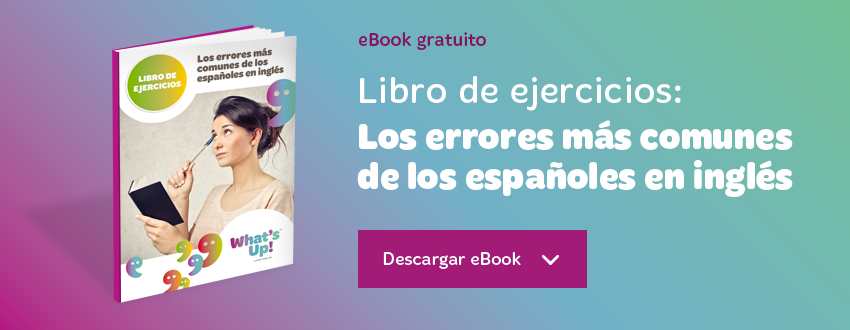What's Up! blog
el mejor contenido del mejor curso de inglés
Practicar inglés con estos ejercicios sobre there is there are
¿Te apetece practicar algo de inglés? ¡No aceptamos un no por respuesta! Hoy te hemos preparado unos ejercicios sobre el uso de “there is” y “there are“. Una parte sencilla de la gramática pero que te vendrá genial practicar sobre todo si estás trabajando con los contables e incontables en inglés. Let’s go!
There is y there are: repaso de cómo se utilizan
There is y there are se traducen como “haber” y se utilizan para decir que algo existe o introducir un nuevo tema en una conversación:
- There are two new students in our class.
- There is a meeting today at seven.
Las formas there is y there are se utilizan para hablar en presente. La peculiaridad de este tipo de oraciones es que el sujeto de la oración no es there, sino el complemento que le sigue. Por eso, debemos tener cuidado y asegurarnos de que coinciden en número. Utilizamos there is cuando el sujeto es singular y there are cuando el sujeto es plural:
- There is a book on the table. A book sería el sujeto de la oración que aparece en singular.
- There are three books on the table. Three books es plural y por ello, utilizamos la forma there are.
Para transformar estas oraciones en interrogativas solo tenemos que invertir el orden. Primero el verbo y después there.
- Is there a book on the table?
- Are there three books on the table?
Ya os decíamos que es interesante trabajar there is y there are cuando estamos estudiando acerca de los contables e incontables y los determinantes como some y any. Debes prestar atención ya que:
- There is se utiliza con sustantivos contables en singular y sustantivos incontables. There is a book. There is some tea.
- There are se utiliza con sustantivos contables en plural. There are three books on the table.
En este tipo de oraciones usamos some con incontables o con contables en plural cuando no queremos especificar una cantidad concreta. Como en el ejemplo anterior usamos There is some tea. Por el contrario, utilizamos any en las oraciones negativas e interrogativas, con nombres incontables o con nombres contables en plural.
- There is some tea — Is there any tea?
- There are some flights to London this morning — Are there any flights to London this morning?
Ejercicios there is there are
Completa las siguientes oraciones con la forma correcta del verbo is o are:
- There _____ a fly in your soup.
- There _____ a man reading in the car.
- There _____ some coffee shops in this area.
- _____ there any tea?
- There _____ more than twenty people waiting to see Beyoncé
(is, is, are, is, are)
Transforma las siguientes oraciones afirmativas en oraciones interrogativas:
- There is a toilet on this train.
- There is a man waiting for you outside.
- There are two women in the shop.
- There are ten children in the class.
(Is there a toilet on this train?, Is there a man waiting for you outside?, Are there two women in the shop?, Are there ten children in the class?)
Ejercicios there is there are some any
A continuación os proponemos unos ejercicios para aprender a usar el there is, there are, some y any. Completa las siguientes oraciones con la forma verbal que corresponda acompañada de some o any:
- There _____ milk in the fridge.
- There _____ coffee. (Negativa)
- There _____ people in the office.
- There _____ money in my wallet.
- There _____ information about technology in the library.
(is some, isn’t any, are some, is some, is some)
En este caso transforma las siguientes oraciones afirmativas en interrogativas prestando atención a some y any
- There are some dogs barking outside.
- There is some information about the trip to Costa Rica on the web page.
- There is some time to go fishing.
(Are there any dogs barking outside?, Is there any information about the trip to Costa Rica on the web page? Is there any time to go fishing?)
Seguro que te han parecido fáciles estos ejercicios con there is y there are. Además, puedes descargar en PDF nuestro libro de ejercicios con los errores más comunes de los españoles en inglés.
Post relacionados:
- Finite clauses vs. Non-finite clauses: qué son y cómo se utilizan
- Los verbos con preposiciones en inglés: ¿cómo se usan?



